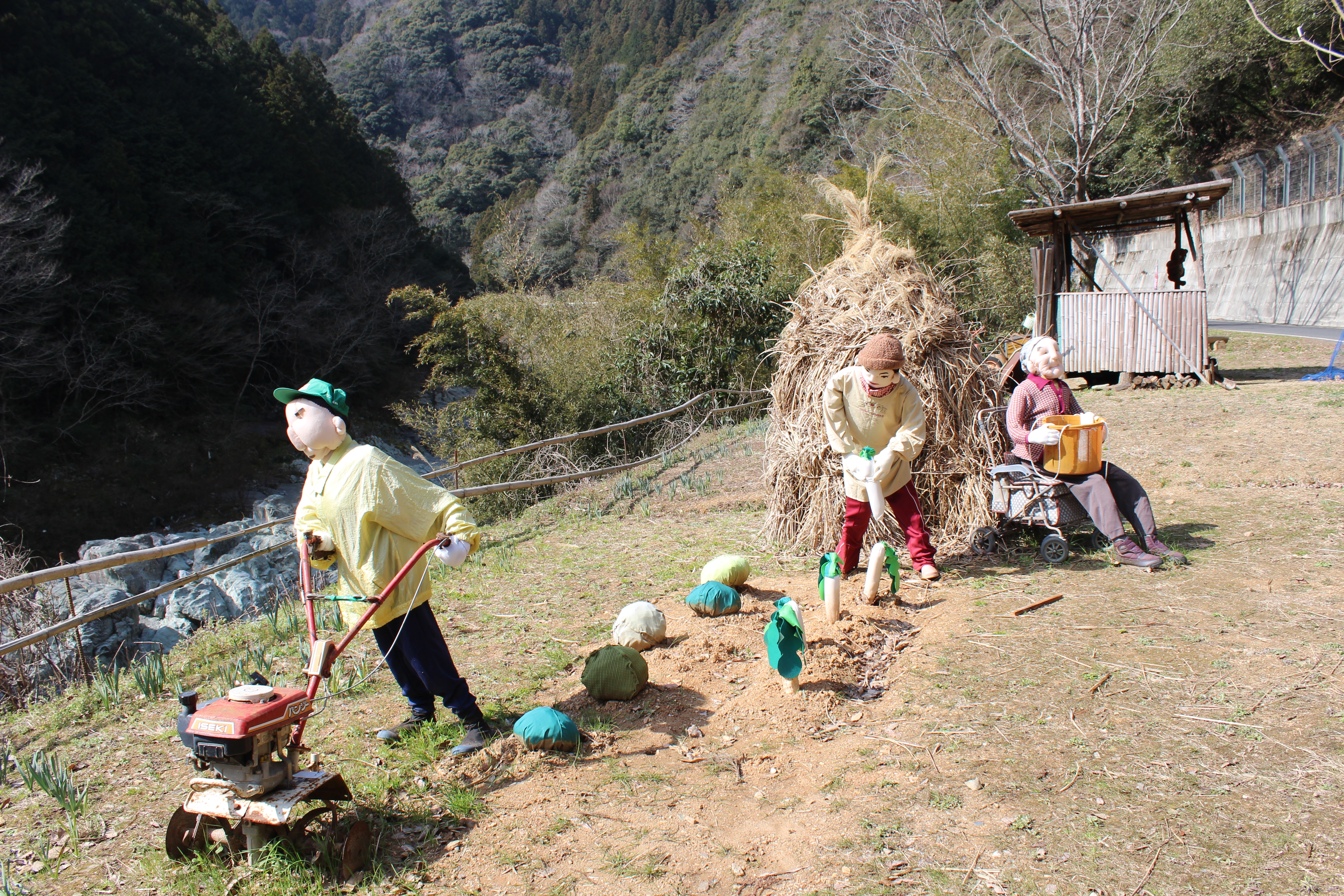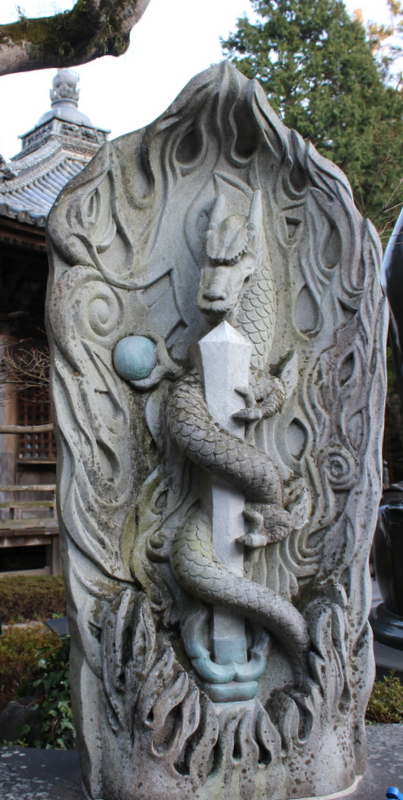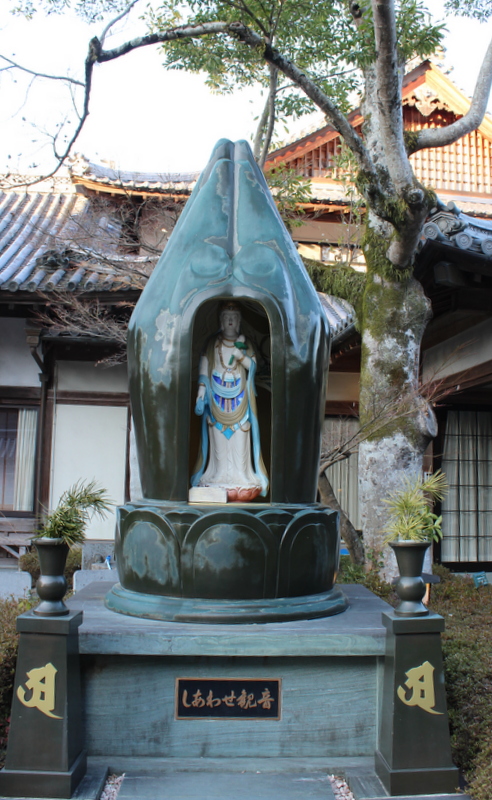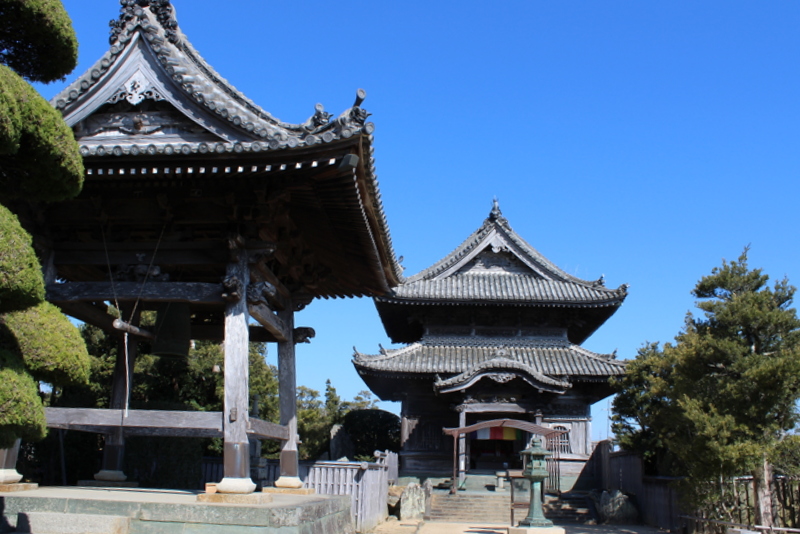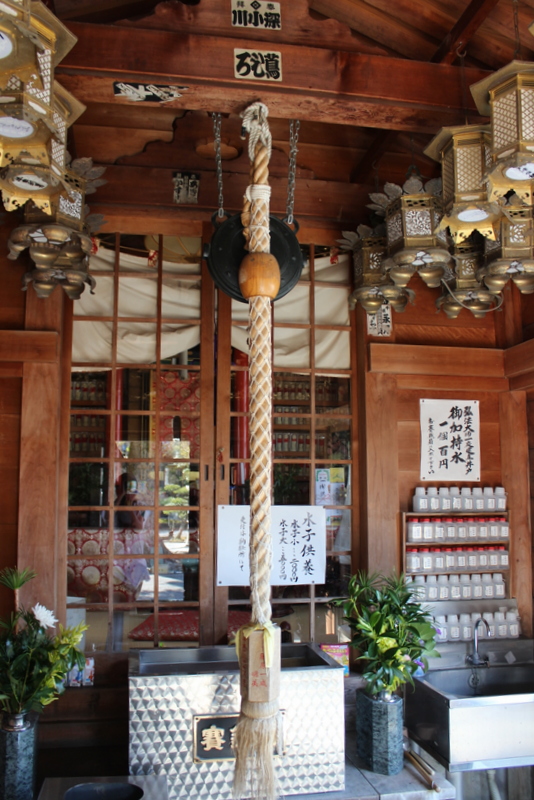Walking with Kōbō Daishi (temple 13 – 18)
Without my Japanese friends, who had now gone back to Tokyo, I was on my own. But for some reason, although there were so many uncertainties in front of me, I did not feel scared. It might have been Kōbō Daishi and the saying “dōgyō ninin”, meaning “walking with Kōbō Daishi”(lit. same-practice two-people) which gave me courage. For sure I also loved my staff and its bell that rang with every step I took.
The pilgrim in front of me was one of very few I met at the beginning of my pilgrimage. For most people, it was too early in the season to walk. However, signs of spring were already everywhere – like the blossoming plum tree you can see in the distance.
In a village along the Akui River, the locals like life-size dolls that portray human activities. Some were very funny.
Dainichiji (temple 13) is a valley temple. As in most of the temples, Buddhism and the original Shinto religion are interwoven. Opposite to the temple gate, on the other side of the street is Ichinomiya Jinja, a Shinto shrine, which took care of the temple in Edo Period, but they were separated in Meiji Period. The statue in front of the Big Hands in praying position (gassho) on a lotus flower contains Shiawase Kannon, Happiness Kannon (Avalokita-svara/-īśvara, Observing (World) Sound, Bodhisattva of Compassion), praying for happiness of all.
Kannon and Dragon
Depictions of dragons are very common in Temples and Shrines. In this sculpture, the dragon, manifestation of Fudo-myo-o, called also the Unmoved protector, is holding the sword of wisdom. With this sword, he extinguishes the triple poison of delusion, desire and divisiveness.
Inside the folding hands (gassho), Kannon, the Bodhisvattva of Compassion stands on a lotus flower. She expresses the intention of saving all beings.
The area I walked through was not as urbanized as at the beginning of my pilgrimage. Many glasshouses provided shelter for the vegetables.
Immediately after the entrance gate, every temple has a water fountain for the cleansing ritual. With a ladle, one first rinses the left and then the right hand before cleansing the mouth. The rest of the water in the ladle is emptied over the handle. Cleaning hands and mouth means purifying body and mind.
After the cleansing ritual, the pilgrim rings the bell in the bell tower to announce his or her arrival.
At Idoji, temple 17, the little son of a priest was allowed to play with the gong.
Grounds of Kokubunji (temple15). After having left my main back bag on a bench, in every temple I did the rituals in front of the main hall and the Daishi hall: lighting a candle and incense, ringing the gong (photo below) with the cord, putting the name-slip in the box, donating money and chanting the Heart Sutra.
Main hall with donation box and gong. The altar of the deity Yakushi Nyorai is located behind the door.
100,000 pilgrims per year come to the Shikoku pilgrimage. Traveling in a bus and in groups is more popular than going on foot. Of the 100,000 pilgrims, only about 2,500 Henros walk. Most of the walking Henros do the pilgrimage in stages.
Several times and in different temples I met the same group of pilgrims. This time, I met familiar faces at Onzanji, temple 18.
Although I packed light, I still had unnecessary things with me. At a grocery store, I shipped a package to my friend in Tokyo with things I could be without. The hardest to let go was Basho’s book “The Narrow Road to the Deep North.”
In the photo, the lady is copying the address Yuko wrote down for me in Japanese. To communicate, it was crucial that I had Japanese phrases with Japanese writings readily available. Even before my pilgrimage started, Yuko was sending me useful sentences to my iPhone. The Google translator on the I-phone was only sometimes helpful. Most of the time the translations did not make sense.


